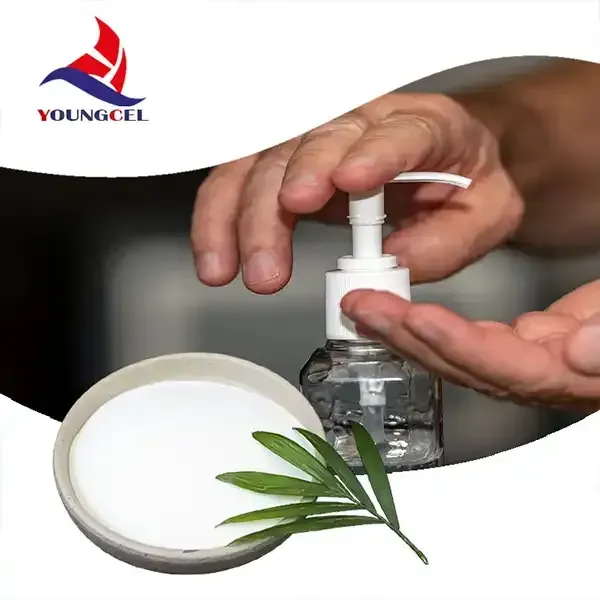Understanding Cellulose Ether The Role of Hydroxypropyl Methylcellulose (HPMC)
Cellulose ethers are a class of chemicals derived from cellulose, a natural polymer found in the cell walls of plants. Among these derivatives, Hydroxypropyl Methylcellulose (HPMC) stands out due to its wide range of applications in industries such as pharmaceuticals, food, cosmetics, and construction. This semi-synthetic polymer combines properties of both cellulose and synthetic polymers, making it a versatile additive and thickening agent.
What is Hydroxypropyl Methylcellulose (HPMC)?
HPMC is produced by modifying cellulose through a chemical process that introduces hydroxypropyl and methyl groups into the cellulose polymer chain. These modifications significantly enhance the solubility and functional properties of cellulose, thus creating a compound that can dissolve in hot or cold water to form a viscous gel. The degree of substitution of the methyl and hydroxypropyl groups varies, which affects the solubility and viscosity of HPMC.
Properties of HPMC
The unique properties of HPMC make it particularly useful across various applications
1. Thickening Agent HPMC is known for its ability to thicken solutions and enhance the texture of formulations, which is essential in food and cosmetic products. 2. Water Retention In construction and building materials, HPMC helps retain water in cement and mortar mixes, improving workability and therefore extending the time available for the application of these materials.
3. Film-forming Ability HPMC can form flexible, transparent films, making it suitable for coatings in pharmaceuticals and cosmetics.
4. Controlled Release In the pharmaceutical industry, HPMC is often used in the formulation of extended-release tablets. Its gel-forming ability allows for the controlled release of active ingredients over a prolonged period, improving therapeutic outcomes.
5. Stabilizer HPMC can stabilize emulsions and suspensions, preventing separation in products such as creams, lotions, and sauces.
cellulose ether hpmc

Applications of HPMC
1. Pharmaceuticals HPMC is used extensively in the development of medications. It acts as a binder in tablet formulations, and as a coating agent to mask unpleasant tastes, while also aiding in the controlled release of drugs.
2. Food Industry In food products, HPMC functions as a thickener, emulsifier, and stabilizer. It is commonly found in sauces, ice creams, and baked goods, contributing to texture and mouthfeel.
3. Cosmetics and Personal Care HPMC is prevalent in cosmetics, where it serves as a thickener and stabilizer in creams, lotions, and gels, enhancing the sensory attributes of these products.
4. Construction Materials In the construction industry, HPMC is incorporated into mortars, tile adhesives, and plasters. It improves the workability of the mixtures and helps maintain the integrity and performance of the materials.
5. Agriculture HPMC is also used in agricultural products, such as seed coatings and soil conditioners, where it helps in moisture retention and improves seed performance.
Safety and Environmental Considerations
HPMC is generally considered safe for use in various applications. It is non-toxic and is recognized as a safe food additive (E464) by several regulatory agencies. However, as with all additives, it is essential to use it according to recommended guidelines. Environmental concerns related to the production and disposal of cellulose ethers focus on ensuring sustainable sourcing of raw materials and minimizing waste during manufacturing processes.
Conclusion
Hydroxypropyl Methylcellulose is a remarkable cellulose ether that boasts a wide range of uses across different industries. Its adaptability can enhance product formulations in pharmaceuticals, food, cosmetics, construction, and agriculture. As industries continue to innovate, the role of HPMC will undoubtedly expand, paving the way for new applications and improved product performance. With its beneficial properties and versatility, HPMC remains a key component in many formulations that enhance our everyday life.
-
Rdp Powder: Key Considerations for Wholesalers in the Building Materials IndustryNewsJul.08,2025
-
Key Considerations for Wholesalers: Navigating the World of Hpmc - Based ProductsNewsJul.08,2025
-
Hpmc Detergent: Key Considerations for WholesalersNewsJul.08,2025
-
Key Considerations for Wholesalers: China Hpmc For Tile Adhesive, Coating Additives, Concrete Additives, and MoreNewsJul.08,2025
-
Crucial Considerations for Wholesalers: Navigating the World of Construction MaterialsNewsJul.08,2025
-
Key Considerations for Wholesalers Sourcing Additive For Cement, Additive For Concrete, Additive For Putty from Additive Manufacturer Shijiazhuang Gaocheng District Yongfeng Cellulose Co., Ltd.NewsJul.08,2025




